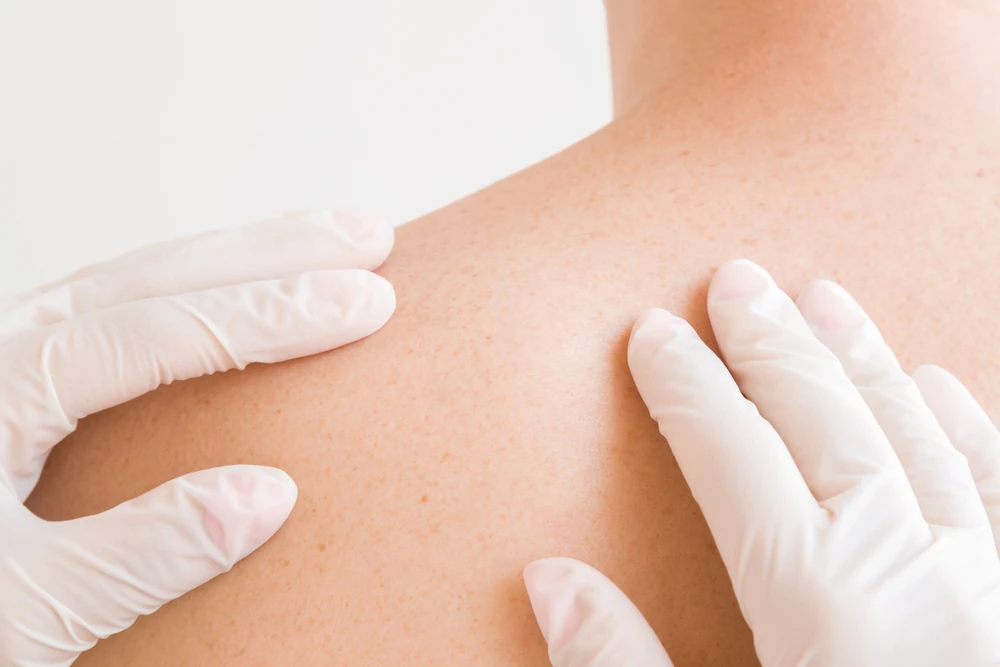Understanding Lipomas, Pilonidal Cysts, and Skin Lesions: When to Seek Surgical Intervention

Understanding these skin conditions, their symptoms, and when surgical intervention might be necessary can help you make informed decisions about your health.
At Long Island Laparoscopic Doctors, we frequently talk with patients about various skin conditions that may require surgical intervention. Dr. Hesham Atwa and all of our surgeons are very experienced when it comes to such problems.
Skin conditions such as lipomas, pilonidal cysts, and other skin lesions are common, often benign, but sometimes troubling enough to require medical attention and surgical intervention. Understanding these conditions, their symptoms, and when surgical intervention might be necessary can help you make informed decisions about your health.
Lipomas: Soft Tissue Tumors
- What are Lipomas? Lipomas are benign (non-cancerous) fatty lumps that grow slowly between the skin and the underlying muscle layer. They are usually soft, painless, and move easily under the skin when touched. Lipomas can develop anywhere on the body but are most commonly found on the neck, shoulders, back, abdomen, and thighs.
- Symptoms and Diagnosis: Most lipomas are small, about the size of a pea, but they can grow larger over time. They are generally painless unless pressing on nerves or blood vessels. Diagnosis typically involves a physical examination, but imaging tests like ultrasound or MRI may be needed if the lipoma is large or unusual in appearance.
- Treatment Options: While lipomas are generally harmless, they can be surgically removed if they cause discomfort, pain, or cosmetic concerns. The procedure is usually quick and performed under local anesthesia.
Pilonidal Cysts: A Painful Skin Condition
- What are Pilonidal Cysts? Pilonidal cysts are pockets of skin that usually form near the tailbone, often filled with hair, debris, and skin. These cysts can become infected, leading to painful abscesses that may need drainage.
- Symptoms and Diagnosis: Symptoms of pilonidal cysts include redness, swelling, and pain near the tailbone, sometimes accompanied by drainage of pus or blood. They can be diagnosed through a physical exam and may require imaging if the condition is severe or recurrent.
- Treatment Options: Initial treatment may involve antibiotics and drainage of the cyst. However, recurrent or severe cases often require surgical intervention to remove the cyst and prevent future issues. Surgery can vary from simple excision to more complex procedures depending on the severity of the condition.
Skin Lesions: Types and Treatment
- Common Types of Skin Lesions: Skin lesions includes a wide range of conditions, from benign moles and warts to more serious issues like skin cancers. Benign lesions are often removed for cosmetic reasons or if they become irritated. Suspicious lesions, such as those that change in size, shape, or color, should be evaluated by a healthcare provider promptly.
- Symptoms and Diagnosis: Lesions are generally identified based on appearance and location. A biopsy may be necessary for suspicious lesions to rule out cancer.
- Treatment Options: Treatment varies from simple removal in an office setting to more involved surgical procedures, depending on the type and size of the lesion. Early intervention is key, especially for potentially malignant lesions.
When to Seek Surgical Help
It’s important to consult with a healthcare provider if you notice any new or changing skin conditions. While many skin lesions are benign, surgical removal can alleviate symptoms, prevent infection, and provide peace of mind.
For lipomas, pilonidal cysts, and skin lesions, our experienced surgeons at Long Island Laparoscopic Doctors can provide a comprehensive evaluation and discuss the best treatment approach for your situation. If you desire an appointment or have questions, please reach out to us at (631) 646-2176.